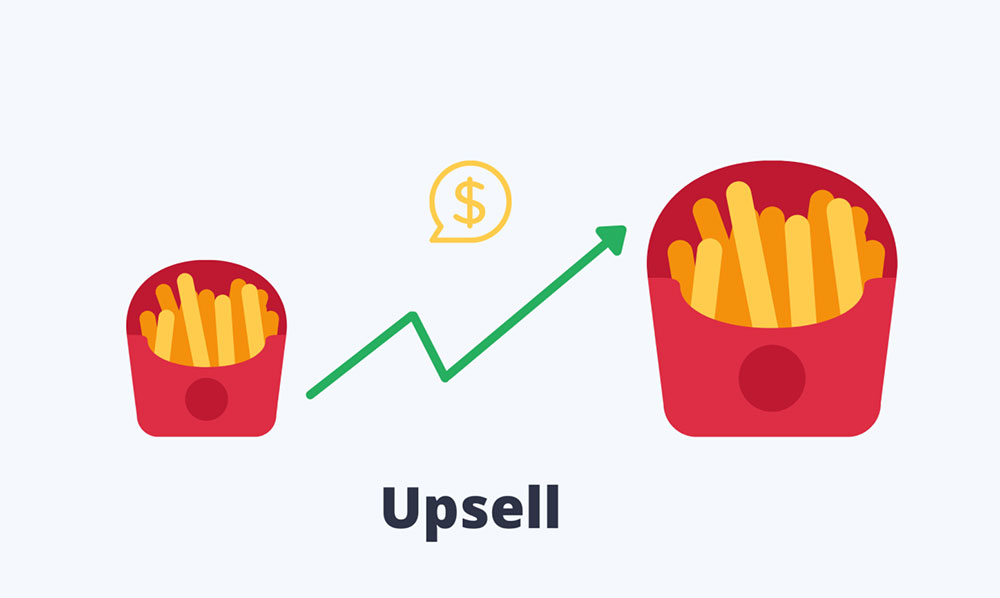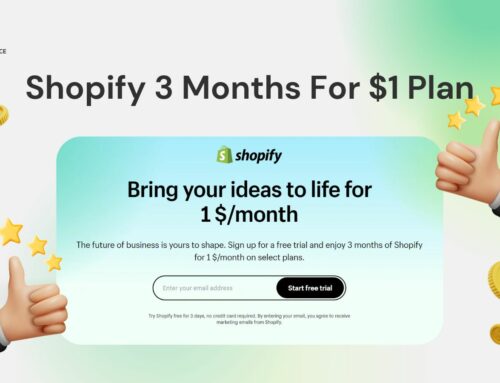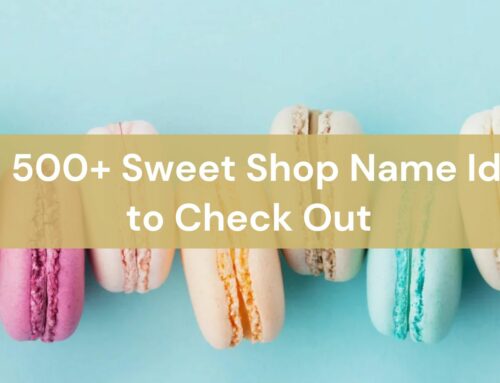Did you know that Upselling is a strategy that many eCommerce companies use to increase their average order value and overall revenue!
Increasing sales in a competitive market appear to be challenging. So, to set your Shopify business apart from the competition, you must employ some unconventional strategies, one of which is upselling.
Amazon, in particular, claims that upsells account for up to 35% of their revenue.
Read on to discover what upselling is and just how you can leverage it to boost your online store’s conversion rates and income.

Contents
What exactly is “Upselling”?
Upselling is the practice of displaying an upgraded version of a product that your customers have purchased or have recently added to their cart. When upselling is done correctly, it can help you sell more products and increase order values.
It helps not only to make a profit but also to improve the customer’s purchasing experience. By recommending the right products, you demonstrate to your customers that you understand their needs and do your best to meet them.
The psychological aspect of “Upselling.”
It’s also crucial to understand why upselling is effective. How can something so basic potentially boost sales by up to 4%? The secret is to strike while the iron is still hot. Just for a moment, think of yourself from your customer’s side.
They’ve usually taken the time to:
- At the very least, conduct some basic product research.
- Examine your brand’s reputation.
- Look around your website.
- Find out more about your product.
Following that, they’ve established that your product is exactly what they’re seeking and will most likely match their requirements. They’ve arrived at your checkout page, ready to enter their credit card information and complete a purchase. In other words, they’re in the purchasing business.
This is critical since many customers are ready to spend a greater price for a product that gives more value than the initial product they planned to buy. Consequently, charging a little more for an update is sensible, and a part of your clients won’t mind.
It is also practical. They aren’t concerned about selecting an alternative because it is there in front of them. They no longer need to go back and seek it. With a simple click, they’re ready to go. These are the reasons why upselling works so well.
Your consumers benefit greatly from your products, and you benefit financially. Let’s get down to business now that we’ve defined what upselling is and why it works. Here are some particular pointers to remember.
Why Is Upselling Essential for your store?
Although sales methods might provoke unpleasant feelings in us, they can improve our buying experience when utilized correctly. Online businesses rely significantly on upselling strategies for a variety of reasons and benefits:
1) Enables merchants to build stronger ties with their consumers
When put in context, upselling is not a dirty trick. Instead, it focuses on satisfying your customers’ requirements by recommending premiums, upgrades, or add-ons. It will be a customer satisfaction approach that produces more profits. It will progressively provide more value and make them feel like they received a better deal than expected.
2) Customers return for more
Upselling distinguishes itself by providing more value to clients, leading them to return for more. By making it simple for clients to receive what they need, you increase the likelihood that they will return if they require more of what you’re offering in the future.
In addition to your upselling efforts, give exceptional customer service to ensure pleased clients no matter what occurs. Collecting reviews will allow you to ask them. You will undoubtedly receive the most excellent solution if upselling is used.
3) Results in a higher Customer Lifetime Value (CLV)
Customer lifetime value is the net profits contribution to your firm over time. Your clients may be divided into three categories: not profitable, profitable, and extremely profitable. Higher CLV indicates that each client creates more income for your organization without requiring you to invest any extra capital. It also implies that your business has more money to attract new clients. Upselling is one of the most successful techniques for converting clients into highly lucrative customers and keeping them coming back for more.
4) Upselling to existing customers is easier than acquiring new ones
Optimizing a sale to a consumer who already trusts you and has purchased from you is significantly more accessible and less expensive. At the same time, selling to a fresh prospect who has never heard of your brand will be challenging. You have a 50-65 percent probability of selling to a current client and a 3-25 percent chance of selling to a stranger, as previously mentioned. It’s a no-brainer for many e-Commerce businesses trying to boost their growth and enhance their bottom line.
Best Practices for Upselling
Here are some tactics to strengthen your Upselling game in three steps:
- Display recommendations at the bottom of the product page or in the sidebar before purchase.
- Use pop-ups, the shopping cart, the checkout page, or abandoned cart emails to display recommendations during the purchase process.
- Following a purchase, use personalized follow-up messages to encourage customers to return for more.
The basis of successful upselling includes understanding your consumers’ requirements and making the purchasing experience more enjoyable. Always remember that a successful upsell makes the customer feel like they’ve gained.
Here are some of the most effective practices to try:
- Encourage upselling and reward your regular customers.
- Show the value of the more expensive product version using side-by-side comparisons.
- Make sure that the product you’re attempting to upsell is within an affordable price range. Customers will rarely pay more than 25 percent of what they plan to spend.
- Don’t be obnoxious. Showcase available alternatives, but give your customers enough space to make their own decision.
- Create a sense of urgency by providing real-time stock updates (i.e., “only two items left” or “limited time offer”).
- Use customer data to personalize offers and recommend products that truly add value to the purchase.
- Notify customers of the risks or missed opportunities of not taking advantage of the offer.
- Use the appropriate language to convey the benefits of purchasing or the risks of not purchasing the recommended product. The value proposition is vital.
- Display a good range of similar products, but don’t overburden your customer with options.
Wrapping up
Running a Shopify online store and becoming successful during competition can be daunting.
Upselling makes your store stand out from the crowd and also assists you in increasing your store’s sales. Plus also helps the customer find the perfect thing they were looking for. Implementing Upselling tactic is a wise move to expand your business goals.



